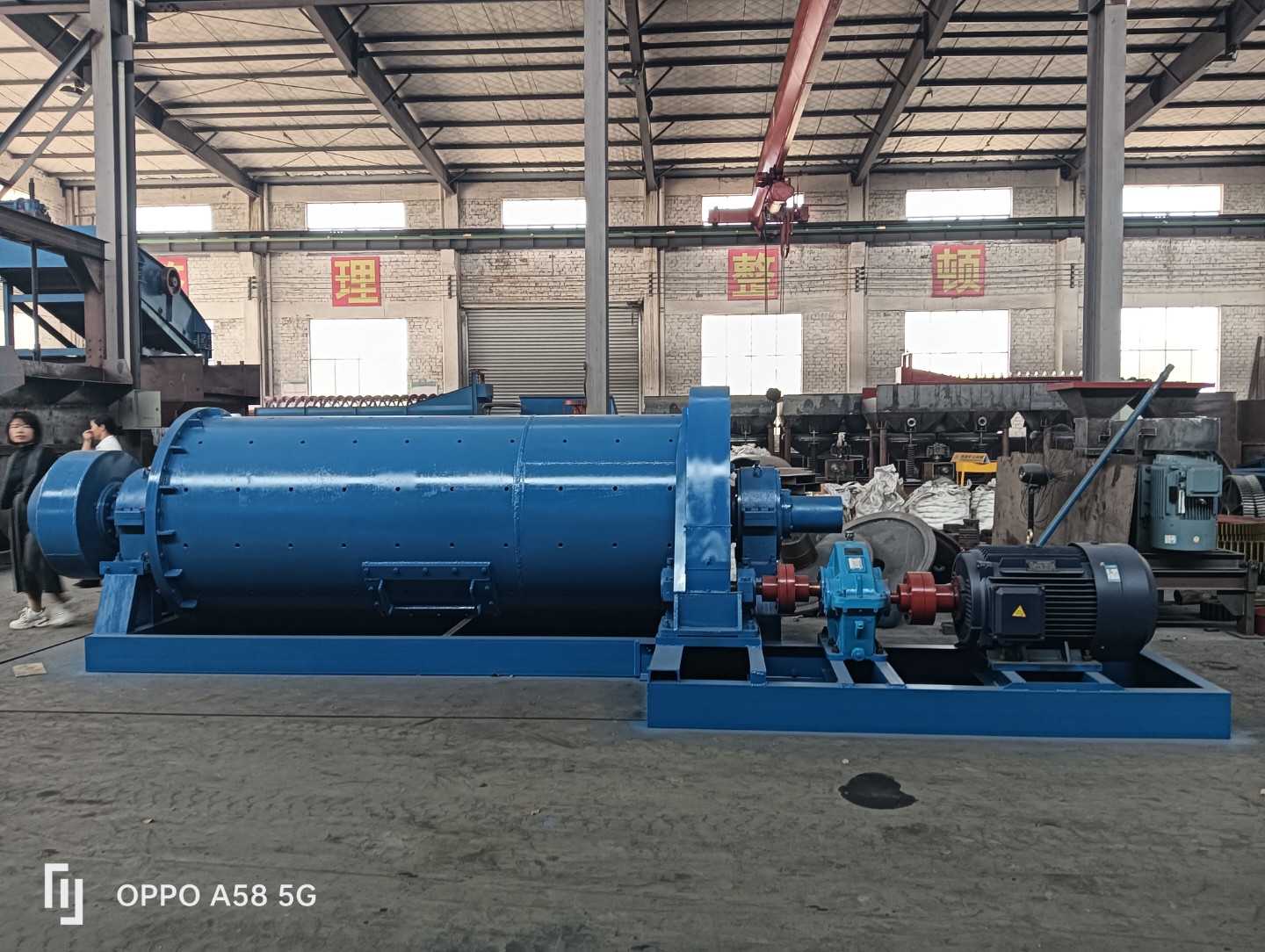 Working principle
Working principleGrinding of materials: During the rotation of the cylinder, the grinding medium will also slide and roll, causing a grinding effect between the grinding medium, lining plate, and material, resulting in the grinding of the material. At the same time, due to the continuous forced feeding at the feeding end and the height difference of the material surface between the feeding end and the discharging end, the material slowly flows from the feeding end to the discharging end under the driving force of the cylinder rotation, completing the grinding operation.
Structural composition
Feeding Department: responsible for evenly feeding the materials to be ground into the cylinder of the ball mill, usually including feeding hopper, feeding pipe and other components. Some ball mills also have internal spiral blades in the feeding port to help the materials enter the cylinder more smoothly.
Discharge Department: Used to discharge ground materials, and there may also be internal spiral blades in the discharge port to assist in material discharge. In the auxiliary equipment at the discharge end, if a spiral conveyor is used, its internal spiral blades can transport the material discharged from the discharge port to the designated position.
Rotary part: It is the core component of the ball mill, consisting of the cylinder, end cover, lining plate, etc. The cylinder is generally welded from steel plates, and the ends are closed with cast iron forged end caps. The outer side of the end caps usually has reinforcing ribs. The inner wall of the cylinder is lined with wear-resistant lining plates, which can prevent the cylinder from being worn and damaged. The lining plates come in various forms such as waveform and long strip, and are generally cast from wear-resistant high manganese steel.
Transmission part: including reducer, small transmission gear, motor, electronic control and other components, its function is to provide power for the cylinder of the ball mill, enabling it to rotate at low speed. The transmission method generally uses a low-speed synchronous motor to rotate the small gear through a coupling, and drives the large gear fixed on the cylinder shell to rotate the cylinder. At the same time, a dust cover is equipped to prevent dust from entering the gear.
Industrial equipment ball mill
Classification method
According to the shape of the cylinder, the ratio of the length of the cylinder to the diameter of the short cylinder ball mill is 1-2; The ratio of cylinder length to diameter of the Guan ball mill is 2-7; The aspect ratio of the conical ball mill is 0.25-1.0.
According to the operation method, intermittent ball mills perform grinding operations in batches. After grinding the material in the cylinder for a period of time, the grinding is stopped and the material is discharged; Continuous ball mills can be used for continuous feeding and discharging, and can be divided into open circuit ball mills, circulating (closed circuit) ball mills, and air swept ball mills.
According to the unloading method, center unloading ball mills can be divided into overflow ball mills and grid ball mills.
Characteristics and advantages
Wide application range: It can be used to process various mineral raw materials and is widely used in production industries such as cement, silicate products, new building materials, refractory materials, fertilizers, black and non-ferrous metal beneficiation, and glass ceramics.
Good grinding effect: It can grind materials very finely and can be used in different grinding stages such as coarse grinding, fine grinding, and ultrafine grinding. By adjusting parameters such as grinding medium size, loading amount, and cylinder speed, it can meet various particle size requirements.
Easy to operate: stable operation, relatively simple operation, easy maintenance and management, high degree of automation, remote control and monitoring can be achieved, reducing manual labor intensity.
Suitable for a wide range of materials: It can handle materials with different hardness, humidity, and particle size, and has strong adaptability to materials. Whether it is hard ores or softer chemical raw materials, it can be effectively ground.
application area
Mineral processing industry: used for grinding ores, slag and other materials to fully separate useful minerals from gangue minerals, in order to facilitate subsequent mineral processing operations such as flotation, magnetic separation, gravity separation, etc., and improve the recovery rate and grade of minerals.
Building materials industry: mainly used for grinding materials such as cement clinker, limestone, clay, etc., to produce high-quality cement products. It can also be used for grinding glass raw materials, ceramic raw materials, etc., to improve the performance and quality of materials.
Chemical industry: Various chemical raw materials, such as pigments, coatings, plastics, rubber, etc., can be ground to meet the required particle size and fineness requirements, improving the efficiency of chemical reactions and product quality.
Metallurgical industry: used for grinding metal ores, providing qualified raw materials for subsequent smelting processes, making it easier to extract the metal components in ores, and improving the recovery rate of metal smelting.

 ball mill-Mining Machinery-Jiangxi Mingxin Metallurgical Equipment Co., Ltd.
ball mill-Mining Machinery-Jiangxi Mingxin Metallurgical Equipment Co., Ltd.